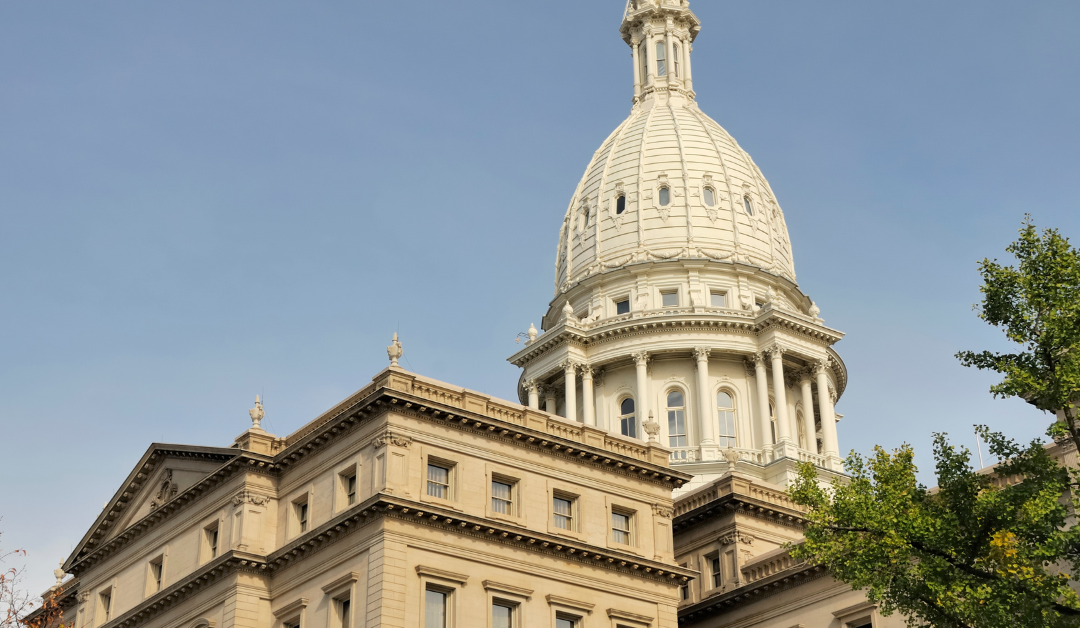
The Sanilac Petroglyphs Historic State Park This historic park was donated to the state by the Michigan Archaeological Society in 1971, and is listed on the National Register of Historic Places. Photo: michigan.org
Along a backroad just south of Bad Axe, a small dirt parking lot and an unassuming sign are the only hints of something bigger—and deeply significant to the Indigenous people of Michigan—in the woods beyond.
SANILAC COUNTY—In the fall of 1881, a wildfire tore across central and eastern Michigan. In a single day, the flames scorched more than a million acres of land, ravaging the entire Thumb region of the state and killing 282 people.
The next day, twilight came on at 12 p.m. Enough soot and ash from the “Thumb Fire” had gone into the atmosphere that any sunlight not obscured was filtered into an eerie glow all the way to New England. Sept. 6, 1881, became known as “Yellow Tuesday.”
It was on Yellow Tuesday that a farmer in Sanilac County set out along the Cass River to see what remained of his land. Even having lived through the nightmare of the wildfire, he was unprepared for what he saw. Jutting from the earth was a large slab of sandstone, where thick brush had previously been. As he approached the stone, he saw pictures etched onto it—carvings. Spirals, pictures of animals, figures that looked like people—one even holding a bow and arrow. The farmer had found the largest collection of Native American petroglyphs in Michigan.

A petroglyph is a carving made in stone. Humans have been making them for thousands of years all over the world. The oldest petroglyphs in North America, at Nevada’s Winnemucca Lake, are between 10,500 and 14,800 years old—making them three times older than the Egyptian pyramids. Here in Michigan, the Sanilac Petroglyphs are probably closer to 1,000 years old, made well before the Columbian era.
Celebrate Michigan’s Indigenous heritage: 5 Ways to Acknowledge Indigenous Peoples’ Day in Michigan
The Michigan petroglyphs go by another name that tells us more about their history: Ezhibiigadek Asin. It means “written on stone” in the Ojibwe language. The Ojibwe, along with other Native American tribes in the Great Lakes region, make up a cultural group known as the Anishinaabeg. It was members of this cultural group, the original Michiganders, who carved the petroglyphs centuries ago.
Back then, the Cass River ran next to the rock, having not yet eroded into a valley. The river was an important source of food and life; this rock became an important place to honor that source. The Anishinaabeg people would meet there to share stories and food, hold spiritual ceremonies, and carve teachings and tales into the stone.
Keep exploring: 7 Must-Visit Michigan Destinations You Can Get Into For Free
According to local tribe members, the carvings were intended to offer a historical record and guidance for future generations. In a sense, they’re earth-made tapestries, filled with characters and stories depicting their creators’ way of life and connection to the world. There’s an eagle man, Migizi Inini, who looks eastward toward the new day, and Mishibizhew, the water panther, who protects the Great Lakes. There are also Anishinaabeg handprints, swirling lines, and etchings of other people and animals. Even dotted lines pointing directly north and south were carved at a time when navigation could only be done from the stars.

But one figure stands out in the narrative. A person who almost seems to be looking straight at the viewer, despite aiming a bow and arrow into the distance. This is Ebmodaakowet. His arrow is knowledge, and he’s shooting it into the future.
Ebmodaakowet’s presence on the stone seems to summate everything the carvings were intended to be. Knowledge and teachings, shared through stone and through generations, to link the people of their day with those who might come after them.

And they have. The Saginaw Chippewa tribe, who co-manages the park with the Michigan DNR, holds spring and autumn ceremonies at the site. The stone is ceremonially cleaned with water from the Cass River. Readings and teachings are shared, as they were hundreds of years ago. It’s once again a place to meet, celebrate, share, and learn. A reclamation of history that for so long has been covered up, held back, or extinguished altogether. There have even been discussions of some carvings being re-etched—a debated topic between anthropologists and Chippewa teachers. Nevertheless, the site is more than simply another one of Michigan’s many historic roadside attractions. As the carvings in stone once helped those in the past understand their future, it now helps those in the present understand their past.
Adventure with Aaron: Aaron Meets a Cast of Characters at the Michigan Renaissance Festival

You can visit the 240-acre Sanilac Petroglyphs Historic State Park, located near Cass City, seasonally throughout the year. Admission is free, and there’s an interactive walking tour to explore.
As you walk along a wooded path, you’ll notice sandstone rocks scattered within the trees. These rocks were formed 340 million years ago, when a prehistoric river delta deposited sand and mud along its banks. This sandstone layer was buried in glacial ice, then uncovered again as glaciers retreated north 12,500 years ago. The glacier’s melt formed what became the Cass River. And it’s from 8,000 years ago, not long after the glaciers disappeared, that we have our earliest evidence of humans living in the Cass River area. Eight thousand. That, fellow Michigander, was a very long time ago.
As the path widens into a clearing, you’ll come to a wood pavilion. A tall chain link fence surrounds the structure, and behind it is a sandstone slab. Scattered across the stone are the carvings.
DNR employees are there to answer questions and point out different carvings and their meanings. But most importantly, they’re there to ensure nobody messes with the petroglyphs. There are entire sections of the stone missing from the original canvas; gaping holes left over from someone in the 20th century who decided they’d like a souvenir.
Call before you go to be sure the park is open, as it’s weather-dependent: 989-856-4411. Learn more here.
Politics

Mundy Twp. project gets state funding in effort to boost local manufacturing
More than $9 million awarded to a planned development project in Genesee County could provide a big boost to the local economy and help create...

It’s official: Your boss has to give you time off to recover from childbirth or get an abortion
Originally published by The 19th In what could be a groundbreaking shift in American workplaces, most employees across the country will now have...

Michigan Dems win special elections to regain full control of state government
LANSING—Democrats won back a majority in the Michigan House and restored their party's full control of state government Tuesday thanks to victories...
Local News

That one time in Michigan: When we became the Wolverine State
How did Michigan become tied to an animal that's practically nonexistent there? Among the many nicknames that the state of Michigan has, arguably...

Readers’ Choice: Top 5 Bowling Spots in Michigan
From retro lanes — including one of the oldest running bowling alleys in the country — to modern entertainment centers, there's something for...





